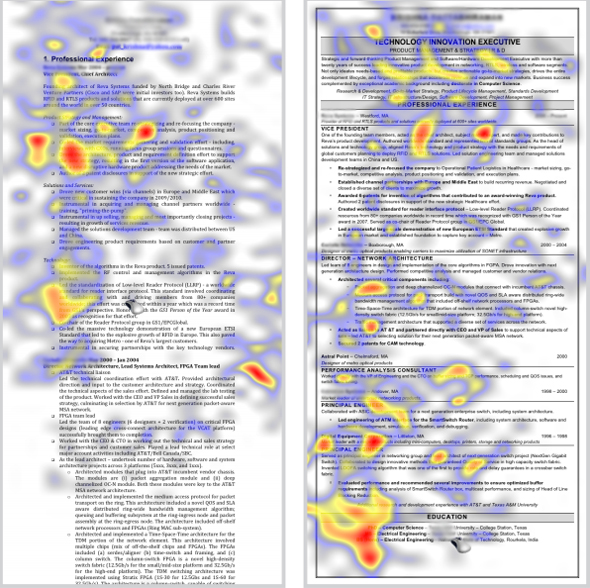Ive read hundreds of resumes throughout my career and I certainly have spent more than 6 seconds on each. I understand that at this point in time recruiters are overwhelmed by resume submissions, but I can’t imagine 6 seconds is enough time to evaluate WHO a person is, and Im a bit insulted by this particular finding.
What I take away from this is having a relationship with your recruiter is essential. When blindly submitting resumes for jobs, follow up by any and all means necessary – that means go to LinkedIn and find out how you can connect with someone at the company – ANYONE – and see if they can help you get a longer look at your credentials.
Now, on the flip side, in all honesty I have dismissed people based on poorly designed resumes (especially if they were applying for a design position) and certainly for spelling or grammatical errors. I don’t profess to be an English expert, or the grammar police, but I have to assume the resume is a good indication of future correspondence internally, and potentially with clients. So spell check people!!
What Recruiters Look At During The 6 Seconds They Spend On Your Resume
by Vivian Giang
Although we may never know why we didn’t get chosen for a job interview, a recent study is shedding some light on recruiters’ decision-making behavior. According to TheLadders research, recruiters spend an average of “six seconds before they make the initial ‘fit or no fit’ decision” on candidates.
The study used a scientific technique called “eye tracking” on 30 professional recruiters and examined their eye movements during a 10-week period to “record and analyze where and how long someone focuses when digesting a piece of information or completing a task.”
In the short time that they spend with your resume, the study showed recruiters will look at your name, current title and company, current position start and end dates, previous title and company, previous position start and end dates, and education.
The two resumes below include a heat map of recruiters’ eye movements. The one on the right was looked at more thoroughly than the one of the left because of its clear and concise format:
With such critical time constraints, you should make it easier for recruiters to find pertinent information by creating a resume with a clear visual hierarchy and don’t include distracting visuals since “such visual elements reduced recruiters’ analytical capability and hampered decision-making” and kept them from “locating the most relevant information, like skills and experience.”











